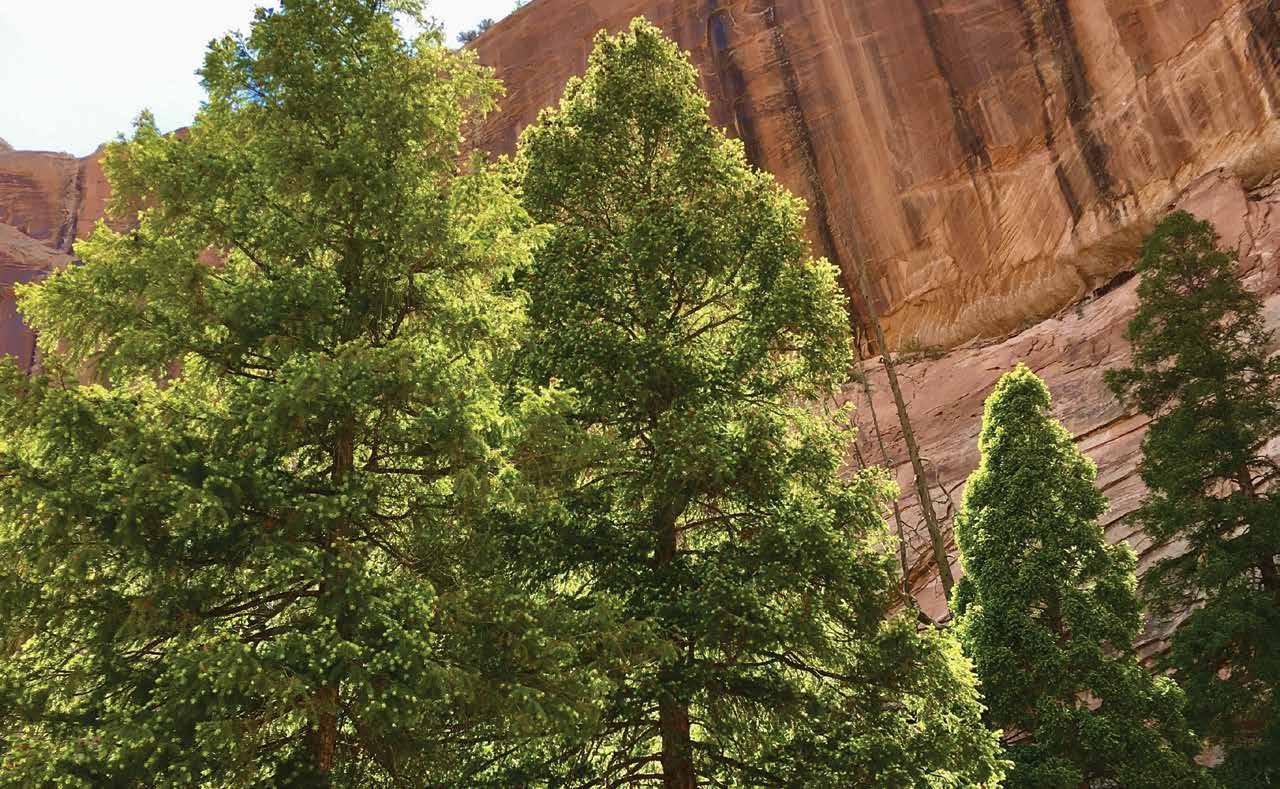
5 minute read
Opening the bottleneck
BRING A FRIEND!
CHECK OUT MOAB REGIONAL HOSPITAL’S 3-D MAMMOGRAPHY MACHINE The American Society of Breast Surgeons suggests that females over 40 years of age get yearly mammograms to check for signs of breast cancer, which affects 1 in 8 women.
CALL TODAY! 435-719-3794
OPENING THE BOTTLENECK LOCAL COMMUNITY EAGER FOR COMPLETION OF HIGHWAY 191 WIDENING PROJECT
Written by Rachel Fixsen | Photos by Murice D. Miller
This spring, the Utah Department of Transportation began work on what every Moab resident knew was going to be a significant inconvenience while underway—but which would be worth it when complete. The outcome, scheduled to be completed in June next year, will be an additional lane for traffic in each direction from the north end of Moab to the Colorado River bridge, as well as improved storm-water drainage, a sidewalk, and a completed multi-use pathway linking downtown to Lion’s Park, and farther on to existing paved pathways to Arches National Park or up the scenic River Road.
Dizzying rows of orange traffic barriers line a narrow temporary course for traffic to work its way in and out of town on the north end, as road crews work step by step, and section by section.
BUSINESSES ADAPT TO TEMPORARY HASSLES
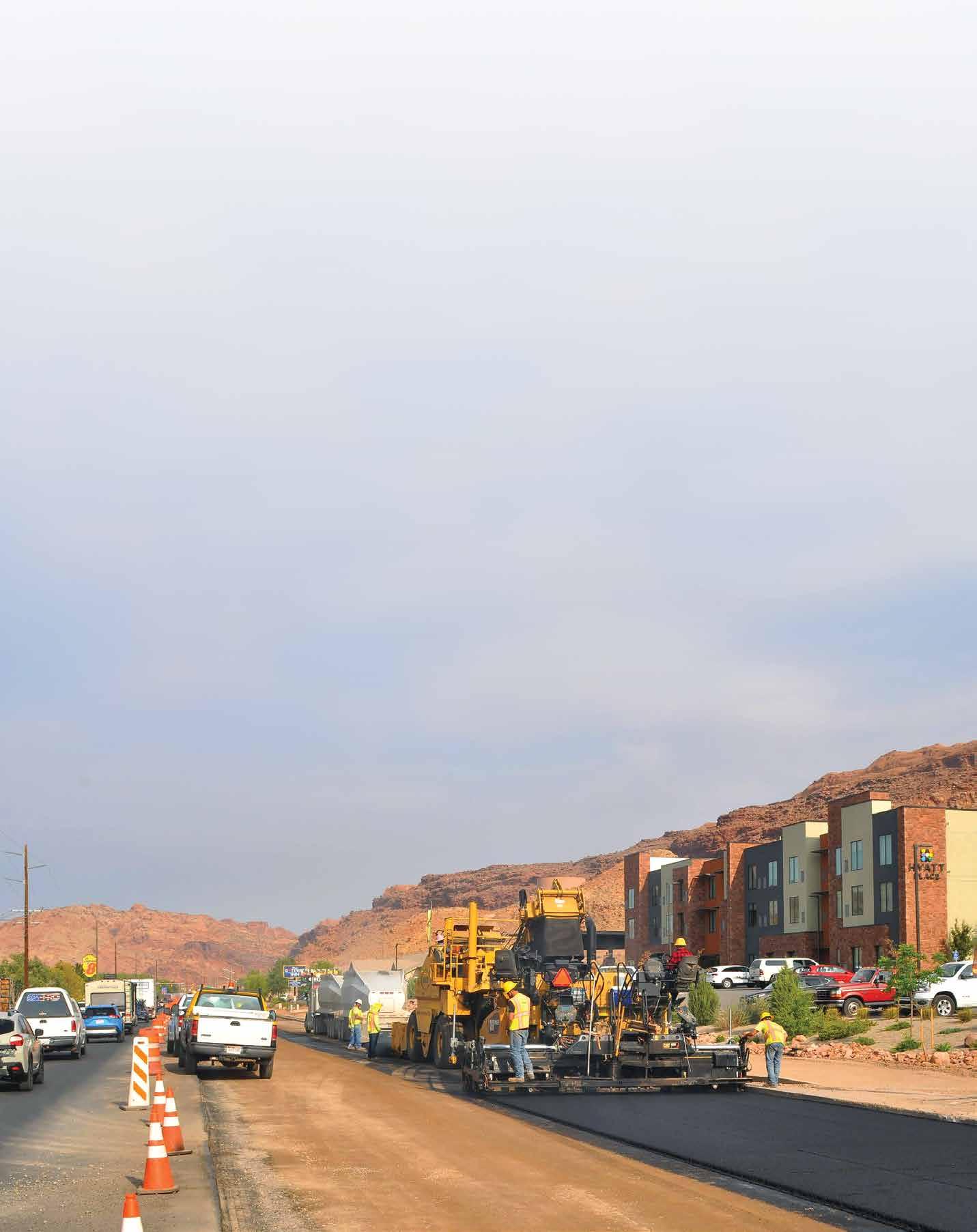
Business owners and residents have been patient because they anticipate the wider highway and pedestrian paths being a boon to the community.
“I’m excited for when it will be done,” says Natasha Boaro, director of sales for the Hyatt Place Moab, which faces 191 in the project corridor. The construction has been particularly problematic for her business. Guests who want to head south into town must take a right out of the Hyatt Place parking lot and drive north away from town before they can turn around. At one point, workers had to shut off water to the hotel while they laid asphalt; the asphalt had to be re-done twice more after it failed tests, and the water had to be shut off again. These instances have been trying for the Hyatt, which has been full for the last two months. However, Boaro says that the finished project will allow their operations to run more efficiently.
“It will be beneficial in the long run,” she says, adding that the multi-use pathway will provide an option for guests who want to walk to the downtown area. The pathway is a Moab City project happening in partnership with the highway improvements; UDOT is also laying sidewalk on the west side of the highway in the project corridor.
“Especially where we’re located, if a guest wanted to walk into town, it’s not that far—it’s
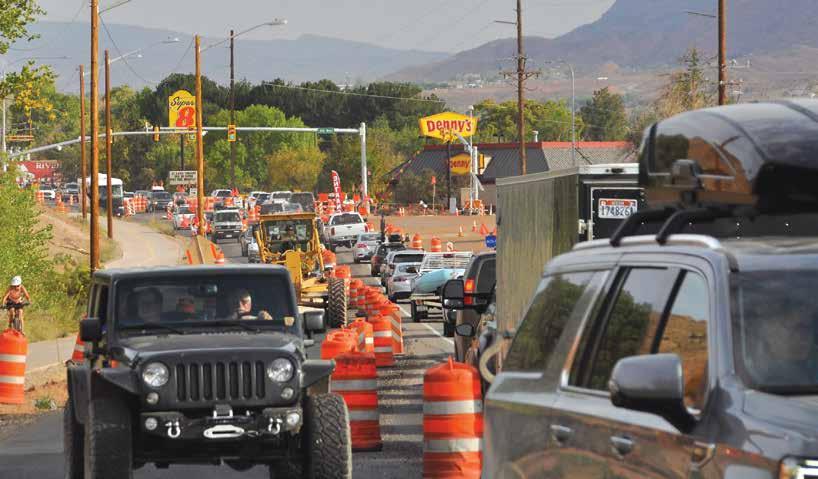
— Ryan Anderson, UDOT Project Manager
just not safe as it currently is,” she says. The sidewalk and pathway will provide a more comfortable way to reach town on foot or on a bike.
Ashley Korenblat is the owner of Western Spirit Cycling Adventures, a bike tour and guiding company, and a local advocate for bicycle use and public lands. She agrees more pedestrian access is a positive thing.
“The less people have to drive into downtown the better,’ she says.
The Moab Rock Shop is a longtime, iconic Moab retailer also located in the project corridor. Employees there agree the backed up traffic has been a nuisance, but say it hasn’t impacted business too much.
“It’s going well,” says Cameron Smith, who works at the Moab Rock Shop, of the shop’s operation during the infrastructure project.
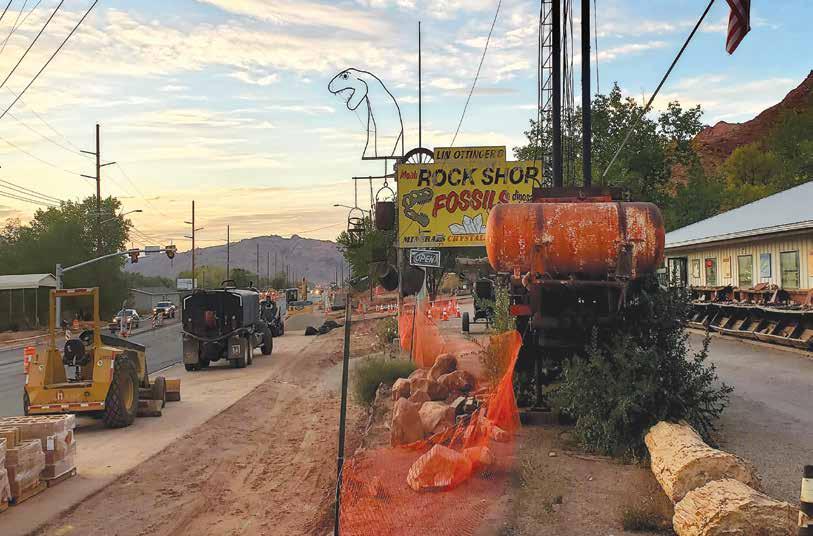
“Sometimes people park across the street and walk across and make their way in,” says Rock Shop manager Kathryn Stewart.
The Rock Shop granted UDOT a right-of-way and had to move some historic mining equipment that had long been displayed in front of the store. They’ll also lose a few parking spaces. However, they were able to capitalize on the fact that the street was being excavated. The Rock Shop is planning for a new building in the next few years, and while UDOT had the equipment and crews handy, the Rock Shop paid for a waterline to be laid to the new building site.
Stewart also looks forward to the wider highway.
“Traffic usually gets backed up right there because people are coming in and out of town,” she says. Once the construction is done, she expects that will be alleviated. In the meantime, UDOT is providing regular updates on their work and customers are still coming in to browse the rocks, minerals, and fossils.
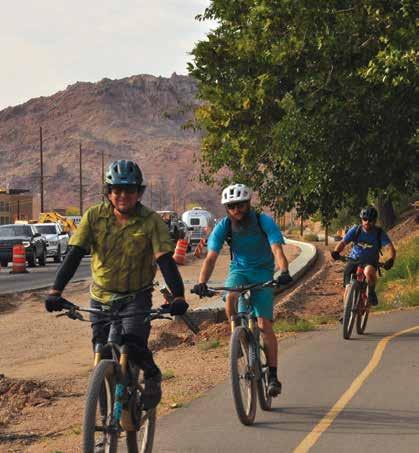
STORM WATER MANAGEMENT The City of Moab partnered with UDOT to complete a storm drainage infrastructure project at the same time as the highway widening. The new infrastructure will divert water from Stewart Canyon, which channels down to the highway from the cliffs east and above, under the road and to a set of catchment structures. After being filtered through the structures and through vegetation, the water will make its way into the Scott and Norma Matheson Wetlands Preserve along the Colorado River.
“I can’t emphasize enough what a great benefit this is to have such a major drainage system put in with this, from a development standpoint,” says Kevin Kitchen, regional communications manager for UDOT. He pointed out that the drainage system would make it easier for future developers in the corridor to properly connect to effective storm drainage.
The Nature Conservancy and the Utah Division of Wildlife Resources co-manage the wetlands preserve, and they discussed storm water management with UDOT during the planning stages of the project.
“Preserve managers will be closely monitoring the effects of future storm water events on the preserve once this new system is implemented,” says Tracey Stone, media specialist for The Nature Conservancy. She notes that analyses conducted by UDOT suggest there will be no negative impacts on the preserve.



